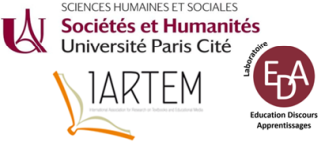When thinking about maps, one of the first associations is the school atlas and the Geography lessons. Indeed, maps constitute a unique cultural artifact allowing for a condensed and dynamic representation of space. While drawings and the occasional pictures served the purposes of visualization, historically, Geography textbooks primarily relied on maps. Given the economic constraints, textbooks in former socialist countries were heavy on text with a minimum of (monochrome) visualization. Scholarship on textbooks in former socialist countries and the USSR primarily focused on textbook content, with a few studies dedicating attention to textbook markets, authors, and their path-dependencies (cf. Bagoly-Simó, 2016). Recent endeavors also viewed textbooks against the broader background of childhood experiences and memories (Silova et al.,2018) and their role as instruments to transmit Marxist-Leninist ideology (Ilovan et al., 2018). Drawing upon these studies, the present study contextualizes Geography textbooks within the main framework of path-dependent (Burawoy & Verdery, 1999) hybrid structures. The post-socialist and post-Soviet condition is best conceptualized as a continuation of socialism with hybrid structures that combine path-dependent elements of the socialist past with those emerging since the 1990s. Following the fall of the Iron Curtain, emerging educational media publishers entering the liberalized market produced visually overloaded textbooks. Along with novel design and layout, content and authorship displayed, as Bagoly-Simó (2016) argues for Romania, path-dependent hybrid structures. It is such hybrid structures that this paper aims to explore further. Thereby, its aim is twofold. On the one hand, this presentation seeks to examine the change in cartographic representation during post-socialist and post-Soviet transformations. More specifically, it aims to collect detailed data on the typology and distribution of cartographic representations within the gradually diversifying world of discontinuous text. On the other hand, the paper seeks to uncover ties between cartographic representation and geographical content. The operationalization rested on a mixed-methods approach. The sample consisted of Hungarian, Romanian, and Ukrainian Geography textbooks for lower secondary education. The comparative approach allows for a broader scope within the post-socialist and post-Soviet space. The focus on lower secondary education roots in its mandatory status in all three countries and the independent status of Geography as a school subject. For each country, the sample consisted of a set of textbooks published during the 1990s and the latest edition for Geography. In the first step, content analysis explored the typology of discontinuous text types. Thereby, discontinuous text featured in the textbook constituted the analytical unit (e.g., picture, table, graph, map, satellite image). The second step turned to cartographic and map-like representations, closely recording their typology, location, and distribution. Two researchers coded 15 percent of each country-specific sample, securing intercoder reliability. Subsequent quantification allowed for the application of descriptive statistics. The preliminary results show both similarities and particular features of cartographic representation during the last three decades. The three country case studies share the common trend of visual overload, with pictures dominating the discontinuous text. Furthermore, there is an overall specialization on thematic maps.
Bagoly-Simó, P. (2016). “1989 and all that”: Geography Textbooks During Post-Socialist Transformation. Post-Socialist Transformation in Romania. In E. Matthes & S. Schütze (eds.), „1989“ und Bildungsmedien. “1989“ and Educational Media. Beiträge zur historischen und systematischen Schulbuch- und Bildungsmedienforschung (pp. 99–108). Klinkhardt.
Burawoy, M., & Verdery, K. (1999). Uncertain Transition. Ethnographies of Change in the Postsocialist World.Lanham: Rowman & Littlefield.
Ilovan, O.-R., Bagoly-Simó, P., & Herbstritt, G. (2018). Visual Discourse in Romanian Geography Textbooks during Socialism (1948-1989). RRGE (Romanian Review of Geographical Education), VII(2), 59–70.
Silova, I., Piattoeva, N., & Millei, Zs. (2018). Childhood and Schooling in (Post)Socialist Societies: Memories of Everyday Life. Springer International Publishing.

 PDF version
PDF version
